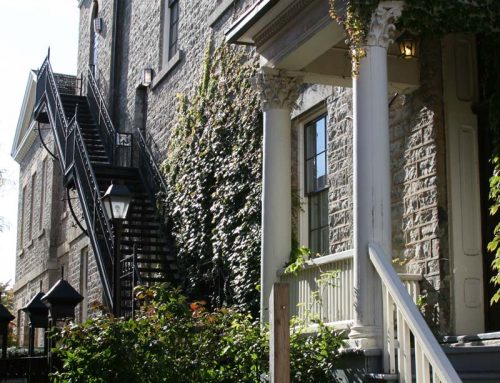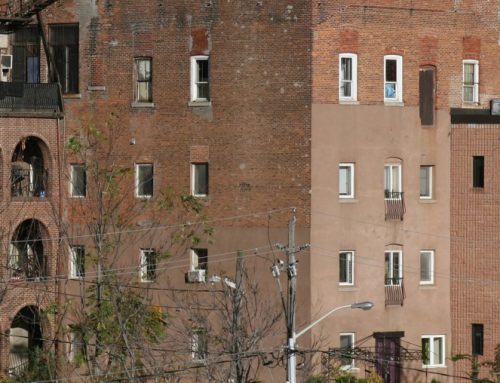[button_link style=”green large” url=”https://www.livinginniagarareport.com/wp-content/uploads/Living-In-Niagara-report-2011-Housing-and-Shelter-in-Niagara.pdf”]Click here to download a PDF of the summary version of this sector.[/button_link]
[pull_quote align=”right”]Affordable housing can help people break the cycle of poverty.[/pull_quote]Safe and affordable housing is fundamental for individuals and families striving to build a strong future for themselves and their communities. It provides the foundation families need to raise children and pursue education, jobs and wellness.
To afford housing is to be able to afford rent or mortgage payments, electricity, water, heating, maintenance and repairs. Appropriate housing has to take the seasons into account: to have a safe place in Niagara’s cold winters and hot summers. Citizens’ access to necessary supports and resources for living improves when they have housing close to transportation, churches, schools and health care. A sustainable building industry with growing trends in housing starts is considered an indicator of a healthy economy and job opportunities.
What we are doing well…
A variety of housing, including subsidized and privately-owned homes, is available in Niagara. Compared to other areas in Canada, house prices and rents are lower; interest rates are also low. The rate of home ownership in Niagara is the second-highest in Ontario, and is increasing, especially for townhouses and condominiums (built or converted). With the assistance of the Canada-Ontario Affordable Housing Program, 181 Niagara households have purchased their own home through the Welcome Home Niagara initiative. The provincial government’s Aging at Home Strategy supports seniors to live in their own home, and the Community Care Access Centre in Niagara coordinates care options, such as Supportive Housing.
By working together, we can improve housing and shelter in Niagara
The Canada Mortgage and Housing Corporation (CMHC) rental affordability index for Niagara indicates that 50% of renters spend more than 30% of their gross income on rent. In 2010, utilities became subject to the provincial portion of the HST, resulting in more renters in Niagara paying greater than 10% of their income on utilities, leading to significant ‘fuel poverty’. Compared to the provincial average of 17.7%, Niagara has seen a 30.6% increase in the number of households going on the wait list for affordable housing. This is attributed in part to improved planning for citizens at risk of homelessness, the sharp rise in cost of utilities and the economic downturn. The waiting time can range from 2.25 to 8.75 years, resulting in some citizens living in substandard housing, and struggling to buy food. Although these statistics reflect our recent past, Niagara Regional Housing is implementing a strong plan for increasing affordable housing. As a community we need to be aware of how individuals’ access to adequate housing affects all of us.
Emerging Activity
- New regulations and standards have been adopted for landowners and property owners regarding property repairs, maintenance, health and building code expectations.
- Many of the recent strategies to reduce the risk of homelessness – The RAFT (Resource Association for Teens), Youth Reconnect and the Niagara Regional Supported Transitional Housing programs – are working and homelessness is trending downward.
- Niagara Regional Housing (NRH) is overseeing the development of over $38 million of new affordable housing communities in various stages of development, with an emphasis on accessibility and energy-efficiency. This includes 133 new affordable housing units for low-income seniors and families as well as persons with disabilities.
- Services such as the Wellness Supportive Living Program, a joint venture between Ontario March of Dimes, Seniors Community Services (Niagara Region), Community Support Services Niagara and Niagara Regional Housing are developing, to assist seniors and others to be able to stay at home with minimum support.
Suggested Action Steps
that emerged from the data, and discussions with community expert opinion leaders:
- Support the gains that have been made in addressing youth homelessness through creation of a Niagara-wide, focused sustainability plan.
- Develop specialized and sustainable strategies to assist unique populations with shelter and housing needs. This includes low-income seniors, individuals, families, and those at high risk of homelessness.
- Expand and resource supported housing arrangements for seniors, and persons with disabilities and/or mental health challenges (those not requiring 24 hour supervision).
- Develop cross-sectoral collaboration that emphasizes the value of seniors aging in their own homes.
- Create Niagara-wide cross-sectoral linkages between initiatives to assist women requiring housing because of poverty and/or domestic violence, poverty reduction action plans, and the four pillars of the Niagara Early Years Planning Council Strategy: families are strong, stable and connected; children are healthy; children are learning; and children are safe.
[call_to_action title=”Expert Opinion Leader Rating” tag_line=”A lot of progress being made.” button=”3b” link=”JavaScript:alert(‘A lot of progress being made.’);”]








